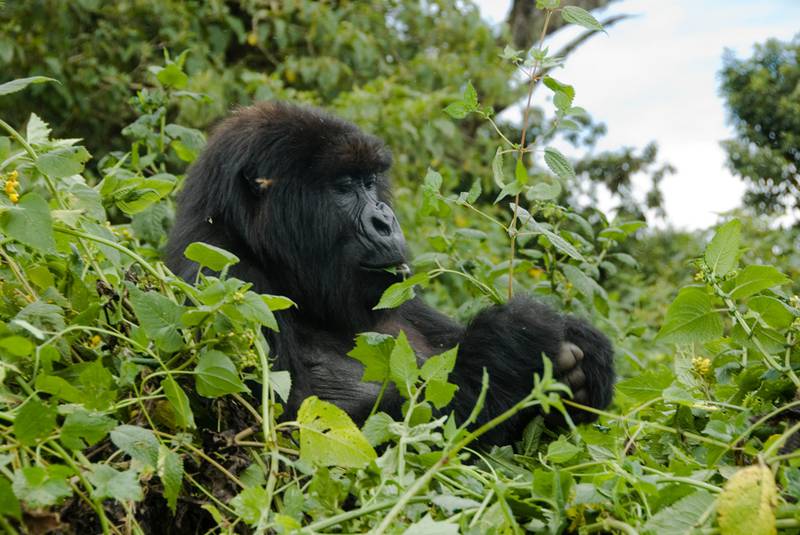What do gorillas eat?
What gorillas eat depends on what their habitat provides and on the time of the year. Mountain gorillas mainly feed on green plant parts, whereas lowland gorillas eat a lot of fruit. However, in the dry season only a few juicy fruits are available and so the animals have to eat more seeds and tree bark instead. Usually, fruits grow on trees; gorillas of all ages climb these trees to harvest them. Although western gorillas eat a higher percentage of fruit than of leaves, stems, pith and shoots, they still eat markedly less fruit than do chimpanzees and orangutans.
The food range of the western gorillas is very broad: they eat about 200 plant species. They particularly like plants belonging to the ginger and arrowroot families. In contrast, the mountain gorillas in the Virunga Volcanoes eat only 38 different plant species, mainly Galium, thistles, celery and nettles.
An adult Grauer's gorilla male is estimated to eat 30 kg of plants every day, an adult female about 18 kg. To be able to process these masses of plant material, gorillas have very strong chewing muscles. Their teeth are much like human teeth, except for the very long, pointed canines of adult gorilla males. The males do not use those for feeding but for fighting against competing males.
Apart from plants, they ingest soil occasionally. Perhaps this soil contains minerals that are missing in their plants, or the minerals neutralize poisonous substances in their food.
Although gorillas don't kill big animals, they regularly eat small animals (mainly insects). However, this constitutes far less than 0.1% of their food. In chimpanzees, up to 6% of the food may be animal matter.
A study in Cameroon by Isra Deblauwe showed that gorillas have a high frequency of insect-eating and a high prey diversity, even higher than those for the sympatric chimpanzees. There are important differences in the nutritional composition of the gorilla and chimpanzee termite prey species. Gorillas select termites high in iron and ash with possible anti-diarrhoeal characteristics. Termite eating in western lowland gorillas might therefore be a high quality alternative for geophagy.
Gorillas eat different insect species in different regions; there may even be traditions in prey choice.
Usually gorillas do not drink much water because their food contains much water. However, this changes slowly because the climate becomes warmer and drier; this means that gorillas become thirstier.

